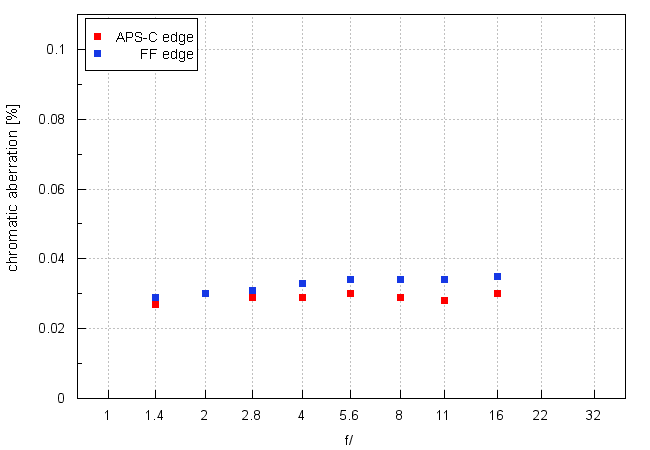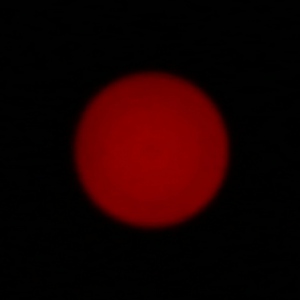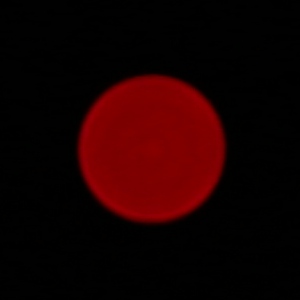Sigma A 40 mm f/1.4 DG HSM
5. Chromatic and spherical aberration
Chromatic aberration
The tested lens doesn’t have practically any problems with the longitudinal chromatic aberration. Even at the maximum relative aperture and in out-of-focus areas positioned in some distance it is difficult to notice any tint. It seems all these six low dispersion elements included in the Sigma optical construction perform as they should. |
The lateral chromatic aberration can be described in similar terms – the graph with the performance on both types of detectors we present below.

Please Support UsIf you enjoy our reviews and articles, and you want us to continue our work please, support our website by donating through PayPal. The funds are going to be used for paying our editorial team, renting servers, and equipping our testing studio; only that way we will be able to continue providing you interesting content for free. |
- - - - - - - - - - - - - - - - - - - - - - - - - - - - - - - - - - - - - - - - - - - - - - - -
Practically all results we got are close to 0.03%, a level we consider to be very low. The Sigma A 1.4/40 won’t cause you any problems when it comes to any variation of chromatic aberration.
| Canon 5DáIII, RAW, f/1.4 | Canon 5DáIII, RAW, f/8.0 |

|

|
Spherical aberration
First photos of this chapter show a noticeable focus shift – when you pass from f/1.4 to f/2.0 and then to f/2.8 the depth of field moves toward the back. It means the Sigma doesn’t correct spherical aberration in a perfect way. In order to check how serious the problem really is we performed another test, an assessment of defocused circles of light reached before and after the focus.
| Canon 5DáIII, f/1.4, in front of | Canon 5DáIII, f/1.4, behind |

|

|
The influence of spherical aberration is visible here as well – the circle we got before the focal point has soft edges and its brightness decreases when you move toward the edge. The circle from the other side of the focus features a distinctly lighter rim for a change. It is another classic symptom of spherical aberration.






